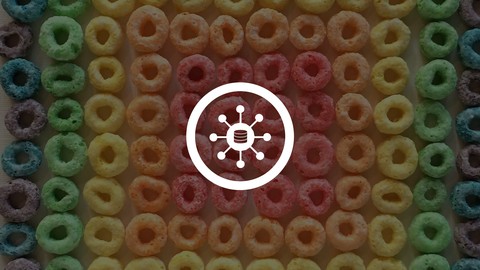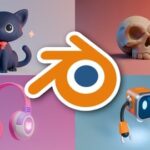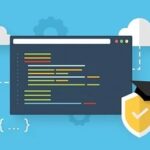
Data Integration with the MarkLogic NoSQL Database
Data Integration with the MarkLogic NoSQL Database, available at Free, has an average rating of 4.55, with 89 lectures, based on 98 reviews, and has 15049 subscribers.
You will learn about Use MarkLogic for data integration Create a data hub to deliver a 360° view of entities Load disparate data from data silos Transform between XML and JSON Use the envelope pattern to harmonize data Execute a CoRB process Execute a Data Movement SDK process Use RDF triples to harmonize data Use templates to harmonize data Use templates to extract data Generate a template view Write Optic API queries Use Entity Services This course is ideal for individuals who are This course is designed for developers and data architects who need to integrate data from silos in order to build an operational data hub to power their applications. We strongly recommend that you first complete the free "Fundamentals of the MarkLogic NoSQL Database" course on Udemy. It is particularly useful for This course is designed for developers and data architects who need to integrate data from silos in order to build an operational data hub to power their applications. We strongly recommend that you first complete the free "Fundamentals of the MarkLogic NoSQL Database" course on Udemy.
Enroll now: Data Integration with the MarkLogic NoSQL Database
Summary
Title: Data Integration with the MarkLogic NoSQL Database
Price: Free
Average Rating: 4.55
Number of Lectures: 89
Number of Published Lectures: 89
Number of Curriculum Items: 89
Number of Published Curriculum Objects: 89
Original Price: Free
Quality Status: approved
Status: Live
What You Will Learn
- Use MarkLogic for data integration
- Create a data hub to deliver a 360° view of entities
- Load disparate data from data silos
- Transform between XML and JSON
- Use the envelope pattern to harmonize data
- Execute a CoRB process
- Execute a Data Movement SDK process
- Use RDF triples to harmonize data
- Use templates to harmonize data
- Use templates to extract data
- Generate a template view
- Write Optic API queries
- Use Entity Services
Who Should Attend
- This course is designed for developers and data architects who need to integrate data from silos in order to build an operational data hub to power their applications. We strongly recommend that you first complete the free "Fundamentals of the MarkLogic NoSQL Database" course on Udemy.
Target Audiences
- This course is designed for developers and data architects who need to integrate data from silos in order to build an operational data hub to power their applications. We strongly recommend that you first complete the free "Fundamentals of the MarkLogic NoSQL Database" course on Udemy.
In this course you will use your development skills to integrate data from silos to create an operational data hub. In this course you will learn how to use the flexible, multi-model NoSQL database MarkLogic in order to load, harmonize, and serve data from a data hub.
To be successful in this course, you will want to first complete the
free Fundamentals of the MarkLogic NoSQL Database course, and optionally the
Building XQuery Apps with MarkLogic course and the MarkLogic Semantics course.
Course Curriculum
Chapter 1: Introduction to the Course and Using MarkLogic for Data Integration
Lecture 1: Introducing the Course
Lecture 2: Understanding the Course System Requirements
Lecture 3: Download the Course Virtual Machine
Lecture 4: Using Virtual Box
Lecture 5: Getting Set Up
Lecture 6: Understanding an Operational Data Hub
Lecture 7: Learning About MarkLogic as a Multi-Model Database
Lecture 8: Pop Quiz
Lecture 9: Lab: Create a 360° View Database
Chapter 2: Loading and Indexing Data
Lecture 1: Storing and Indexing Data
Lecture 2: Loading Documents
Lecture 3: Splitting a Multiple-Record XML Document
Lecture 4: Transforming Between JSON and XML
Lecture 5: Loading Records From a .csv File
Lecture 6: Transforming Data While Loading Part 1
Lecture 7: Transforming Data While Loading Part 2
Lecture 8: Pop Quiz
Lecture 9: Lab: Load Data
Chapter 3: Harmonizing Data
Lecture 1: Understanding Data Harmonization Part 1
Lecture 2: Understanding Data Harmonization Part 2
Lecture 3: Using an Envelope Pattern to Harmonize Data
Lecture 4: Adding Data to an Envelope Part 1
Lecture 5: Adding Data to an Envelope Part 2
Lecture 6: Querying an Envelope
Lecture 7: Using CoRB for Batch Processing Part 1
Lecture 8: Using CoRB for Batch Processing Part 2
Lecture 9: Using the Data Movement SDK for Batch Processing Part 1
Lecture 10: Using the Data Movement SDK for Batch Processing Part 2
Lecture 11: Using the Data Movement SDK for Batch Processing Part 3
Lecture 12: Using the Data Movement SDK for Batch Processing Part 4
Lecture 13: Using the Data Movement SDK for Batch Processing Part 5
Lecture 14: Resolving Entities
Lecture 15: Pop Quiz
Lecture 16: Lab: Add Canonical Data
Chapter 4: Using Triples for Harmonization
Lecture 1: Using Triples to Harmonize Data
Lecture 2: Storing and Indexing Triples Part 1
Lecture 3: Storing and Indexing Triples Part 2
Lecture 4: Querying Triples Part 1
Lecture 5: Querying Triples Part 2
Lecture 6: Querying Triples Part 3
Lecture 7: Pop Quiz
Chapter 5: Using Templates for Data Extraction
Lecture 1: Understanding Template Driven Extraction
Lecture 2: Creating a Template for Rows
Lecture 3: Applying a Template Part 1
Lecture 4: Applying a Template Part 2
Lecture 5: Applying a Template Part 3
Lecture 6: Defining Variables
Lecture 7: Generating a View Part 1
Lecture 8: Generating a View Part 2
Lecture 9: Disabling and Deleting a Template
Lecture 10: Using TDE for Data Integration Part 1
Lecture 11: Using TDE for Data Integration Part 2
Lecture 12: Pop Quiz
Lecture 13: Lab: Create a Template
Chapter 6: Making SQL Queries
Lecture 1: Understanding SQL in MarkLogic
Lecture 2: Running a SQL Query
Lecture 3: Doing a Join
Lecture 4: Creating an ODBC App Server
Lecture 5: Installing the ODBC Driver Part 1
Lecture 6: Installing the ODBC Driver Part 2
Lecture 7: Using mlsql
Lecture 8: Executing SQL from JavaScript or XQuery
Lecture 9: Pop Quiz
Chapter 7: Making Optic API Queries
Lecture 1: Understanding the Optic API
Lecture 2: Writing an Optic API Query Part 1
Lecture 3: Writing an Optic API Query Part 2
Lecture 4: Writing an Optic API Query Part 3
Lecture 5: Using Document Criteria
Lecture 6: Creating a Document Join Part 1
Lecture 7: Creating a Document Join Part 2
Lecture 8: Including Triples Part 1
Lecture 9: Including Triples Part 2
Lecture 10: Including Triples Part 3
Lecture 11: Using the Optic API in an Application Part 1
Lecture 12: Using the Optic API in an Application Part 2
Lecture 13: Writing an Optic API Query in XQuery
Lecture 14: Using the Optic API with the REST API
Lecture 15: Pop Quiz
Chapter 8: Modeling and Harmonizing through Entity Services
Lecture 1: Understanding Entity Services
Lecture 2: Writing a Model Descriptor
Lecture 3: Defining an Entity Type
Lecture 4: Storing a Model
Lecture 5: Generating Model-Driven Components
Lecture 6: Creating Entity Instances Part 1
Lecture 7: Creating Entity Instances Part 2
Lecture 8: Using Instances
Lecture 9: Pop Quiz
Chapter 9: Learning About the Data Hub Framework
Lecture 1: Understanding the Data Hub Framework
Lecture 2: Course Wrap Up
Instructors
-
MarkLogic University
Free training on the MarkLogic NoSQL database platform.
Rating Distribution
- 1 stars: 1 votes
- 2 stars: 0 votes
- 3 stars: 11 votes
- 4 stars: 45 votes
- 5 stars: 41 votes
Frequently Asked Questions
How long do I have access to the course materials?
You can view and review the lecture materials indefinitely, like an on-demand channel.
Can I take my courses with me wherever I go?
Definitely! If you have an internet connection, courses on Udemy are available on any device at any time. If you don’t have an internet connection, some instructors also let their students download course lectures. That’s up to the instructor though, so make sure you get on their good side!
You may also like
- Best Software Testing Courses to Learn in December 2024
- Best Big Data Courses to Learn in December 2024
- Best Internet Of Things Courses to Learn in December 2024
- Best Quantum Computing Courses to Learn in December 2024
- Best Cloud Computing Courses to Learn in December 2024
- Best 3d Modeling Courses to Learn in December 2024
- Best Mobile App Development Courses to Learn in December 2024
- Best Graphic Design Courses to Learn in December 2024
- Best Videography Courses to Learn in December 2024
- Best Photography Courses to Learn in December 2024
- Best Language Learning Courses to Learn in December 2024
- Best Product Management Courses to Learn in December 2024
- Best Investing Courses to Learn in December 2024
- Best Personal Finance Courses to Learn in December 2024
- Best Health And Wellness Courses to Learn in December 2024
- Best Chatgpt And Ai Tools Courses to Learn in December 2024
- Best Virtual Reality Courses to Learn in December 2024
- Best Augmented Reality Courses to Learn in December 2024
- Best Blockchain Development Courses to Learn in December 2024
- Best Unity Game Development Courses to Learn in December 2024





















